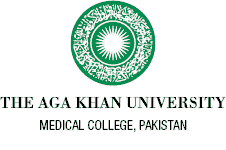We should invest in diagnosis rather than scans worth millions
—Dr Huma Cheema
The major burden of disease in Pakistani children does stem from infection and malnutrition but the next big and less understood is genetic diseases. Pakistan has a highly inbred community with cousin marriages and same-caste marriages. We need to talk about consanguinity and genetic diseases because 73% of Pakistanis will marry in families and in certain areas of Khyber Pakhtunkhwa it can go up to beyond 80% in the rural areas. So after infectious disease and malnutrition, the biggest killer of children in Pakistan would be genetic diseases: almost 50% of mortality in infancy, and that's a conservative estimate.
So millions of children with rare diseases are virtual health orphans in our country. We really don't have a lot of regional centers. Before 2013, before the Lahore center started, you were maybe seeing some patients at AKU but there was really no rare disease center in Pakistan.
I'm a gastroenterologist so why did we become interested in setting up a rare disease center? It happened because children with genetic and storage diseases are referred to a gastroenterologist or hematologist. Many had terminal counseling to take the baby home as there was no chance of survival. Parents would have lost more than one child and some parents had lost all their children. And with a huge number of patients coming to Children's Hospital, I saw our hospital tackle a major burden of genetic diseases.
And if you look at this family where all these three beautiful sisters, they have the same genetic disease, they are on treatment and doing well. They have Gaucher. But then there's pressure on the mother to have kids, and not only children, but also have boys.
They're not really counseled about disease and they continue to have more sick babies. So our journey began in 2006 when we had no access to either diagnosis or treatment. It was very costly to send samples abroad. We couldn't be sending thousands of samples and charging people.
At that time, we did not have the people or money but multiple collaborations and networking helped. We had the diseases, the world had the tech. We had a breakthrough with German scientists, Centogene, and the Yale Genome Center which opened the gates to diagnosis for us. So we started not only having these clinics in Lahore, but in all major cities of Pakistan.
In 2015, the Rare Disease Center at the University of Child Health materialized.
We published after testing more than 1,000 patients from Pakistani families which showed a very high diagnostic yield. And if you look at that, 61.3% or even more because some were almost 20% reported as VUS (Variant of Uncertain Significance). So you could say almost 80% had a genetic diagnosis.
We recently published a paper looking at secondary findings in the Pakistani population, which to our surprise, in the overwhelming majority were related to cardiac disease in our country.
One of the biggest burdens are the Lysosomal storage disorders and the biggest number is of Gaucher. You can see quite a large number of Niemann-Pick casers. We were able to establish a database and are now part of an international registry. Today 90% of children with a treatable LSD get treatment at the Rare Disease Center. We are now able to know what is the genotype of our patients and we can correlate it with the early onset disease in Gaucher.
We were also the world's largest contributor on the multicenter multi-site study of the multiomic approach, looking at the biomarkers for metabolic diseases. Our Niemann-Pick B patients are now on enzyme replacement. And we're recently received some patients from Karachi who we have put on enzyme replacement MPs.
We are also doing bone marrow transplants. The latest revolutionary development happened through one of our families whose child died after a bone marrow transplant one or two years later. But in the next pregnancy, the prenatal testing revealed that the fetus was affected. So the family opted to be part of a clinical trial of intrauterine enzyme therapy. The intrauterine therapy was given at the University of San Francisco, California at the Benioff Children's Hospital. The baby has come back to Pakistan with a very low level of blood biomarker and is on regular ERT.
With the massive genomic sequencing at the Rare Disease Center, we have been able to have a huge bioinformatic database and large number of papers published and new diseases discovered.
Prof. Huma Arshad Cheema is Professor Emeritus of
Pediatric Gastroenterology-Hepatology and Nutrition at the Children's Hospital & the University of Child Health, Lahore. She delivered this keynote speech for the AKU Department of Paediatrics & Child Health's fifth research week on Saturday, Sept 2, 2023.


